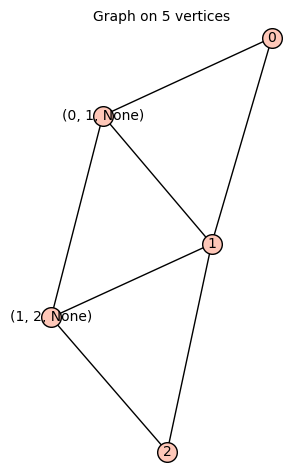Constructing total graph
Let $G$ be a graph of order $n$ and size $e$. The total graph $T$ is the graph associated to $G$, which consists of order $n+e$ and edges consist of the union of the edges of $G$, the edges of line graph of $G$ and the edges of the subdivision graph of $G$.
I know that there is the line_graph() module in SageMath. But, I am unaware of the any module for subdivision graph. In addition, how do we form a disjoint union of edges of the three graphs $G$, its line and subdivision graphs, when their vertex sets are different. So finally, how can we construct the total graph $T$ in SageMath. Any hints? Thanks beforehand.


